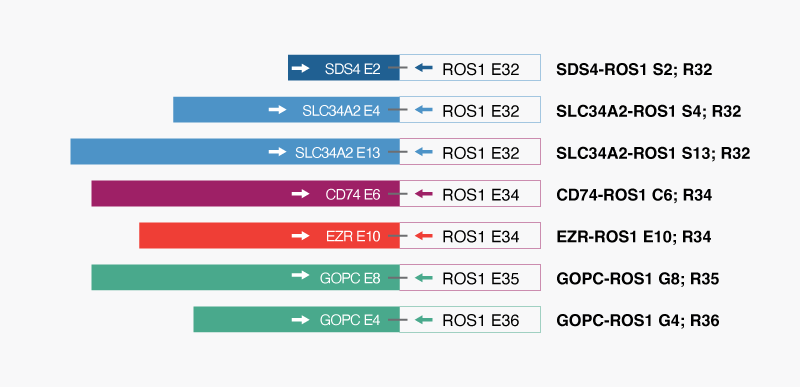ROS1 Fusion Detection Test for Lung Cancer
XNA technology helps increase assay sensitivity and specificity
Research Use Product
Research Service
Early Detection/Screening
Diagnosis
Therapy Selection
Therapy Monitoring
Introducing QFusion™ Test
The QFusion™ ROS1 Fusion Gene Detection kit is a real-time RT-qPCR-based in vitro diagnostic test intended for qualitative and indiscriminatory detection of seven ROS1 fusions in RNA extracted from cells, tissues, and formalin-fixed paraffin-embedded (FFPE) samples.
XNA-based ROS1 fusion detection can increase assay sensitivity (reducing false negatives) and specificity (reducing false positives)
Sensitivity: 50 copies
Reproducibility: Inter-reproducibility: 0.7 to 10.7% depending on the targets Intra-reproducibility: 3.5 to 11.8% depending on the targets
Validated on Roche LightCycler 480II, AB QuantStudio5, and Bio-Rad CFX 384
Lung cancer is the most commonly occurring malignancy in both men and women worldwide. Genomic alterations, including structural rearrangements in lung cancer, have significant predictive value in the treatment of disease.
In lung cancer, two c-ROS oncogene-1 (ROS1) ROS1 fusion transcripts, SLC34A2-ROS1 and CD74-ROS1 were first reported as proto-oncogenes. ROS1 rearrangement mostly occurs at the exon 32, 34, 35, or 36 or introns 31 or 333,4. Among the fusion partners, the most common partners are CD74 (38-54%), EZR (13-24%), SDC4 (9-13%), SLC34A2 (5-10%), and GOPC (2-3%). ROS1 rearrangement test is now recommended for all metastatic lung carcinomas.
FISH is the gold standard to diagnose ROS1 fusion, but it has a relatively high cost, technical difficulties due to limited tumor cell availability, and is operator-dependent results. RT-qPCR using primers specific to ROS1 fusion shows excellent performance with 100% sensitivity and 85.1% specificity.
Two tyrosine kinase inhibitors, crizotinib, and entrectinib, have been approved by FDA as first-line therapy. Therefore, the detection of ROS1 fusions is critical in therapeutic management.
Figure: Schematic of ROS1 fusions detected by QFusion™ ROS1 fusion Detection kit

XNA technology helps increase assay sensitivity and specificity
Powered by XNA technology, the QFusion™ ROS1 Fusion Detection Kit has achieved a much higher analytical sensitivity than other commercial RT-qPCR kits and detection methods. XNA is a synthetic DNA analog in which the phosphodiester backbone has been replaced by a novel synthetic backbone chemistry. XNAs hybridize tightly to complementary DNA target sequences only if the sequence is a complete match. Binding of XNA to its target sequence blocks strand elongation by DNA polymerase.
